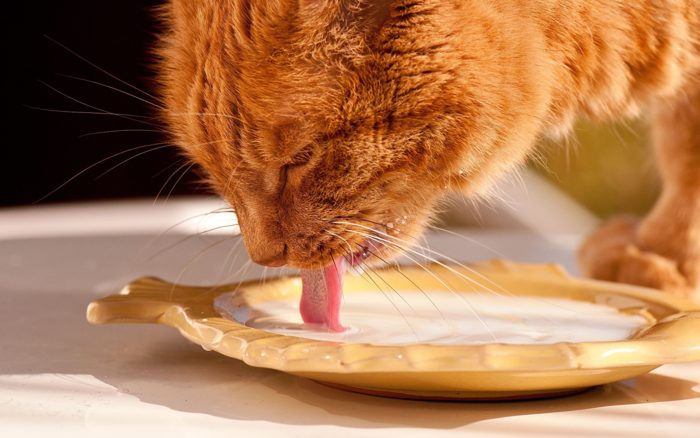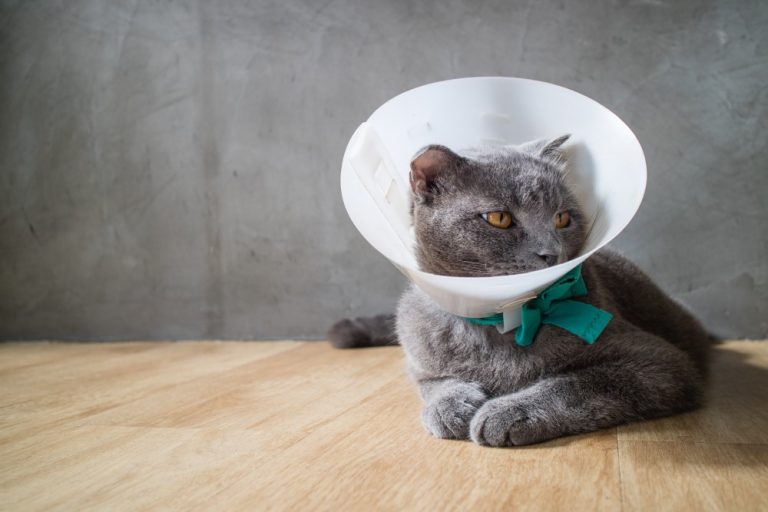Cat castration is an operation that involves surgery to remove the testes from a domestic cat.
This whole procedure takes about 10 minutes:
- First, the cat is injected into a state of anesthesia.
- Then, using a razor from the scrotum, remove all vegetation.
- Next, a couple of cuts are made and the seed canal is dragged to remove the testes.
After castration, the cat remains a small scar (no more than 2 centimeters). Do not worry, because it is not noticeable at all. Veterinarians agreed that the castration should be carried out no earlier than 7 months. However, some owners consider the ideal age 9-12 months.
So that the cat does not have complications after anesthesia, careful care of the animal is necessary. The clinic can offer you to leave your pet in the hospital, if the cat has a predisposition to any disease, then it is better to use it.
Contents
Preparation and day of surgery
What should be the cat before the operation:
- First of all, your pet must be completely healthy. Therefore, observe the animals a few days before surgery. The cat should eat well and have a healthy appetite.
- It is necessary to pre-treat the cat from worms. It is desirable to rid the pet of fleas, lice and worms every 2-3 months. It is necessary to anthelmintic animal at least 10 days before castration.
- Constantly vaccinating your cat is also necessary. Vaccination is a necessary condition that must be performed before castration, since immunity will be reduced after the operation. Vaccination should be carried out 10 days before deworming.
- Before the operation, it is desirable to conduct an examination of the body, in particular, to find out the condition of the kidneys, heart and lungs. This is especially true for pedigree cats. If there are no contraindications, then you can safely castrate your cat.
You need to take a warm blanket with you, napkins (in case the animal starts to vomit), carrying, laying in the carrier: a sheet, diaper or mattress. Be sure to take, if you have, the veterinary passport of your animal, which indicated previously made vaccinations.
Feeding the cat before castration
It is advisable not to feed the cat 12 hours before the planned operation. Indeed, the operation is carried out with the use of narcotic substances as well, therefore, the cat may experience vomiting. On an empty stomach, the animal will be easier and without discomfort to transfer the operation.
Contraindications for cat
There are many contraindications, so it’s easier to say that the animal must be completely healthy:
- Any heart defects.
- Pulmonary insufficiency.
- Inflammatory processes.
- Infections.
- Early age.
- Kidney failure.
Cat care after castration
Particular attention should be paid to the care of the animal on the first day after the operation, and then for several days it is necessary to carefully monitor its health. You need to know that most of the complications occur in the first few days after surgery.
First day
The cat departs from anesthesia within 1-4 hours, it all depends on the drugs, age and technology of the operation. Immediately after the return of consciousness, the pet may try to get up and go about his business, but he does not succeed. There is usually a strong lack of coordination – a consequence of the effect of anesthesia on the brain.
Please note that cats do not have enough logic to understand the dangers of their condition, they may try to jump or jump somewhere, which can lead to injuries.
Therefore, the cat must be left on a soft, warm, but not high place, and bowls with water and food should be placed nearby, so that he does not have to jump or walk somewhere.
It is quite normal if immediately after anesthesia the animal does not want to eat, the appetite will return in the evening or the next day. But usually pets are very thirsty.
Vomiting is sometimes observed, especially if the diet was not sustained before the operation at 12 o’clock. This is quite normal phenomena, you should not worry about them, but if the refusal of food or vomiting is observed for more than a day, then this is already an occasion to consult a doctor.
First week
Care should be taken to care for the wound for 10-14 days, before removing the sutures or until the wound is fully tightened.
Care should be as follows:
- The wound and sutures are treated with antiseptic solutions; iodine, brilliant green, potassium permanganate, furatsilin and any other drugs are suitable for this. When choosing a remedy, it is better to consult a veterinarian, he will tell you more effective and modern drugs. Treat carefully, do not rub the wound, and soak it with a tampon or cotton moistened with an antiseptic substance.
- So that the pet does not lick or scratch the wound, an Elizabethan collar is worn over his head. He will limit the mobility of the animal, will not allow him to reach the wound. The design is not comfortable, often it prevents the animal from moving, jumping, playing and running. But you need to suffer. The collar can not be removed! Even if the pet has a particularly distressed look.
- In addition, it is necessary to change the filler in the cat’s litter twice a day, because the wound can easily become contaminated and become infected with a dirty filling. The filler is better to use crumpled, it is clearly different in consistency and color from the unused bedding when it absorbs moisture, which will allow for more thorough cleaning of the pot. Of course, if a cat has a habit of going to the pot strong enough, then it is better to refuse the filler for a while.
Feeding
During the first 2-3 weeks you need to transfer the cat to a new diet. The transition should take place not in a few days, but for at least a month. Remember that cats have very strong food habits, they hardly switch to a new feed. It should be remembered that you can feed a pet only with natural food or industrial feed.
When feeding with natural feeds, the main part of the diet should be meat and meat by-products. At the same time, it is not necessary to feed the selected cat tenderloin, you can use a variety of by-products: lungs, bones, scar and other tail. One of the main principles is the exclusion of fish and fatty meat, since the first leads to an increase in stone formation in the bladder, and the second – to obesity.
When feeding with industrial feeds, you can purchase special products for neutered cats (with a corresponding mark). Only here we must remember that it is better to buy food in a specialized pet store. Moreover, if you feed the cat with such products, then it should not be given food from the table.
Possible complications after castration
Special attention is given to the topic of side effects and complications after castration. The problem can be both in anesthesia and the surgery itself.
Among the most frequent complications emit:
- Painful sensations.
- Swelling and bruising.
- Inflammatory process.
- Pulmonary edema.
- Bleeding.
Prevention of complications after castration
Preventing complications in a cat after castration is a whole range of activities that should not be missed to avoid unpleasant consequences. You can offer to leave the cat for a day in the clinic, but try to refuse it, because the pet needs the love and care of the owner.
During the first five hours after the operation, your cat will be lethargic and very weak. Therefore, it requires careful care. The cat is likely to experience dizziness, thirst, or vomiting. This is a normal phenomenon, the animals so depart from general anesthesia, so the owner should not worry.
Most often, the animals suffer pain quietly, do not fit the food and constantly lie or sleep. Pupils are in an expanded form and constantly look at one point. To relieve the pain of the cat, it is necessary to purchase painkillers. You can not use human drugs. Before buying them you should always consult with a veterinarian.
While caring for a cat it is necessary to provide him with complete peace, try to limit communication with other animals and children. The main thing is that the cat always had clean water and food in sufficient quantities.
Important! For better wound healing, you need to buy brilliant green and 3% hydrogen peroxide. They need to process the wound twice a day. For treatment, moisten a cotton swab with an antiseptic and blot the wound with it. Do not rub! It may damage the seams or tear the scab.
To ensure that your pet does not lick the wound, you must purchase a special collar. He will not allow the animal to reach the groin area. You can not remove the collar, it will not prevent the cat from moving around the apartment and eat.



















